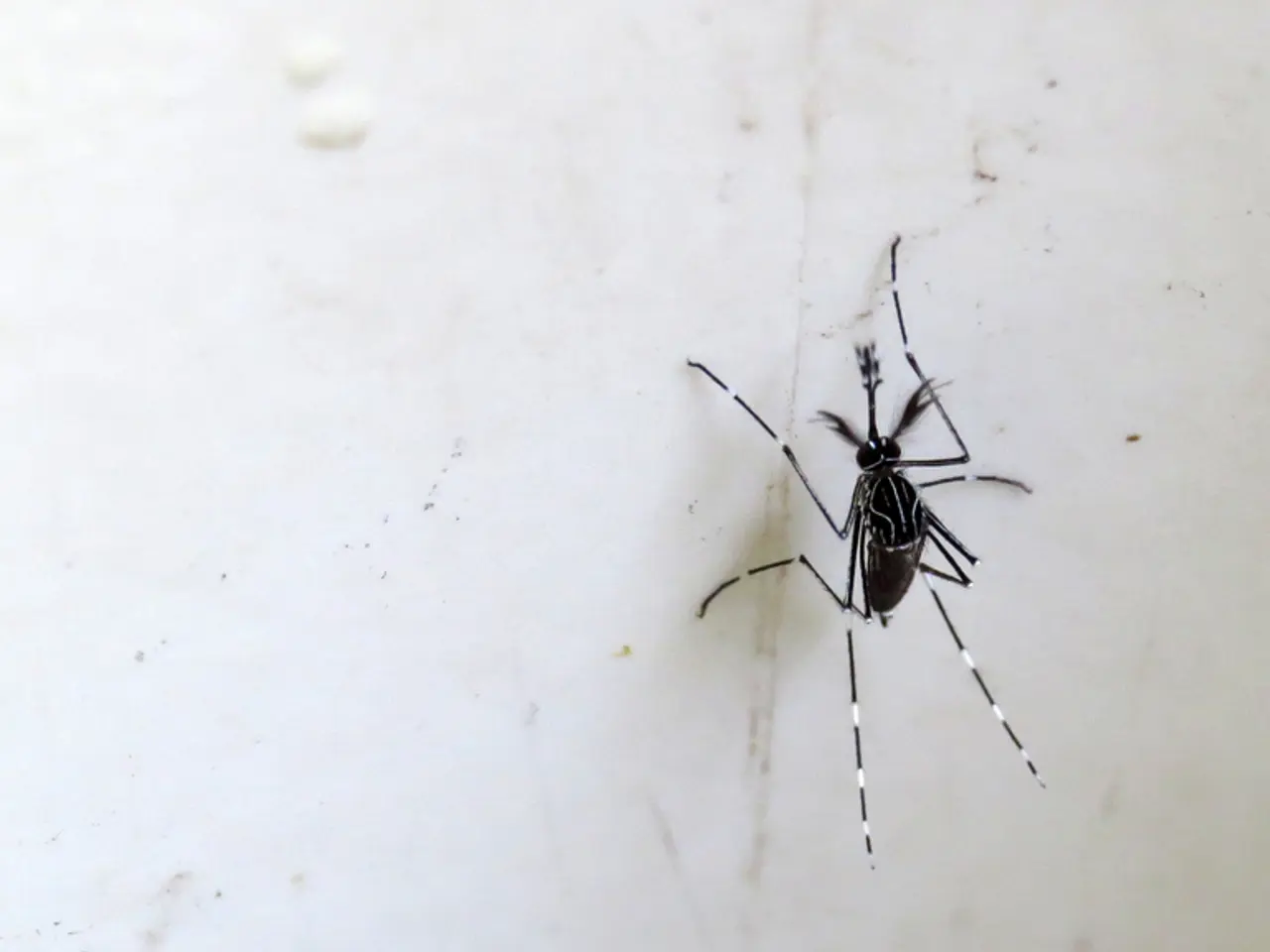Zika Virus Resurfaces in Americas, 7,394 Cases Reported in 2025
The Zika virus, primarily spread by infected Aedes mosquitoes, has resurfaced in the Americas, with 7,394 cases reported so far in 2025. First identified in Brazil in 2015, the virus can cause severe complications, particularly in pregnant women and their babies. Despite its seriousness, there's currently no vaccine available.
Zika virus symptoms are often mild or non-existent, affecting around 80% of infected individuals. When symptoms do appear, they include rash, fever, headache, fatigue, conjunctivitis, and joint pain, usually resolving within two weeks. The distinctive rash is a combination of flat blotches and raised tiny bumps, starting on the trunk and spreading, and is itchy in most cases.
Preventing mosquito bites is the primary defense against Zika. This includes wearing protective clothing, using effective repellent, sleeping under a bed net, and staying in places with window screens. In areas at risk, reducing standing water to decrease mosquito populations is also crucial. Precautions are also necessary during sexual activity, as the virus can linger longer in urine and semen than in blood.
The Zika virus, first described in 1947, has caused serious complications, including microcephaly and other birth defects in babies born to infected mothers, as well as neurological issues like meningitis and Guillain-Barré syndrome in some cases. With no vaccine available, prevention methods are vital. Health authorities urge vigilance, especially in regions where the virus is active, to protect against its potentially devastating effects.







